Alibaba – How It Dwarfs the Other Big Players & Why You Should Care
Alibaba just listed its cayman island holding company on the NYSE. Did you get your warm slice of China’s eCommerce future? Its shares closed significantly above their initial price on the New York Stock Exchange (NYSE) on Friday, a sign of the excitement surrounding the Chinese internet giant.

Here’s just some of the ways it’s bigger than other internet giants – which may surprise you!
– More than 100 million shares were traded in the minutes after the stock was launched – more than Twitter.
– Alibaba is now valued at $231.4bn – making it significantly larger than Amazon and Facebook.
– Alibaba operates a series of online marketplaces in China and elsewhere, handling more transactions than Amazon and eBay combined.
– It’s almost as big as Walmart for gods sake!
– It’s even got Jack Ma – an Asian Steve Jobs who’s got the cult following without the megalomaniac traits.
Why You Should Care? – Growth Potential.
It is responsible for more than 80% of online eCommerce in China.
Already, the country is home to the largest population of internet users on the planet – and most estimates say that only half of China’s 1.3 billion residents have signed online. This is in the backdrop of Twitter and Facebook experiencing user growth slow down.
One of the biggest challenges any website owner faces is keeping their website Search Engine Friendly & Optimised. Google’s rapid fire of algorithm updates has spanned every denomination of the animal kingdom.
We exist in a post penguin, panda, pigeon, hummingbird world. If you want free tickets to the zoo, don’t draw monkeys, make friends with the Zoo Keeper.
Now more than ever, its important to view all SEO activities through a single lens – would Google see this as a relevancy factor for the user?
SearchMetrics recently released their largest study to determine what key factors influence SEO rankings. It seems there have been significant changes since 2013, where social dominated with 7 out of the top 8 ranking factors.
This year, USER SIGNALS and the importance of CONTENT established that they are no longer just contributors, but rather the main focus of SEO.
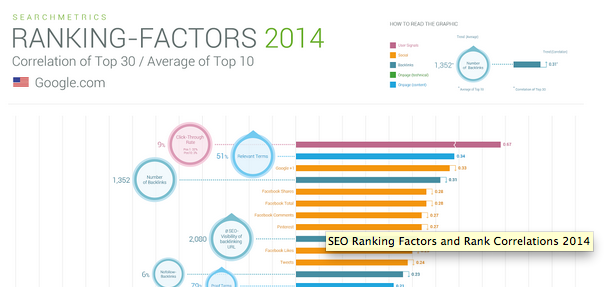
Click the image to see the full graphic
The study stressed the importance of having valuable content built amongst a webpages title, description, body, H1, H2 title tags and so on, with the right balance of quality keywords.
Other large players within content include factors such as:
- Sitespeed
- Position of keyword in title (character)
- Length of URL
- Position of keyword in title (word)
On the USER SIGNALS side – it seems logical that Google prefers sites that achieve high “time on site”, “page views”, and low “bounce rates”. This dovetails perfectly with conversion rate optimisation – one of the hottest digital services offered in 2014, which can boost ROI on pages exponentially.
Interestingly, social signals had a slight decrease in the study year over year. Google’s team of 100s of PHDs may have realised that content and user signals are less “gameable”, and a stronger representation of user intent and satisfaction.
AdWords Match Type Changes: Close Variant Matching
Google implemented close variant matching to phrase and exact match keywords.
WHAT’S CHANGING?
– From late September, Adwords advertisers will no longer have the ability to de-select close variants.
– Therefore, all campaigns will now include these close variants which include misspellings and plurals, regardless of match types.
– Users will be exposed to ads regardless of misspellings (7% of searches contain a misspelling) and abbreviations (frequent in smartphones).
– Advertisers will see on average 7% more clicks with (hopefully!) minimal semantic drift.
– You guessed it, Google makes more revenue.
SO WHAT DOES THIS MEAN?
– Reduced control over keyword selection.
– Specifically, “pure” Exact and Phrase Match match types are not available.
TECHNICALLY SPEAKING
– Previously Adwords gave the option to include close variants (which was the default anyway) on Exact and Phrase match. This option is being taken away.
An example of how this change will effect campaigns can be shown using the keyword “baby clothes”. Previously, under ‘Exact Match’ with close variants off, the ad would only show for the term “baby clothes”. When the new changes come into effect, the ad will now show for ‘babby clothes’, baby clo thes’ and problematically ‘baby cloths’ (different meaning).

WHAT CAN BE DONE?
– Negative keywords are going to become even more crucial, as that will be the only way to prevent the “clothes/cloths” situation described above.
– Close attention should be paid to the Search Query Report to track actual searches.
NIMBULL RECOMMENDATION
– Nimbull does not normally switch on ‘do not include close variants’, therefore it will have very little effect on the live campaigns.
Twitter Tries To “Wake The Sleeping Giant” With Timeline Change
Twitter tries to “wake the sleeping giant” with their newest modification to the Twitter timeline.. Read on for more.
So you spent the last 5 years perfectly curating your Twitter feed into an amazing channel of information. You may have even experimented with tools like TweetDeck, that allow you to set rules around what Tweets you see.
Well Twitter has news for you.
They have now officially changed the behaviour of your Twitter Timeline so that you can receive tweets from people you do not follow e.g Tweets from people your closest friends follow.
This has stirred up a frenzy of negative response, shared on you guessed it, Twitter.

Why would Twitter so boldy introduce a change that would quite obviously strike up a furore?
TIMELINE CHANGE – REASON 1: ENGAGEMENT
Twitter has intricate knowledge of your passions and interests, together with usage patterns around when and what you respond to. Their algorithm could easily suggest a range of Tweets that in theory could help you discover new content and therefore boost your engagement on the platform. Guess what engagement is good for? Time on site, bounce rates and page impressions – all the necessary ingredients for a sound advertising monitisation program.
TIMELINE CHANGE – REASON 2: WAKING THE SLEEPING GIANT
Twitter boast 271 million active monthly users. It also has 4 times that amount of dormant accounts – people who joined, but abandoned as they didn’t follow enough people to make the service worth it. Those dormant users still get regular emails saying “Sorry you’ve had a hard time logging into Twitter”, or “Here’s the action you missed on Twitter”. What better way to reinvigorate those users (The Sleeping Giant) than to suggest engaging content using Twitter’s vast database of user profiled information.
The larger question remains – Would Twitter have made such a bold move before going Public? Or is the insatiable need to satisfy shareholders going to see a flurry of similar high risk manoeuvres in the months to come.
Leave us your thoughts below, and don’t hesitate to contact Nimbull Digital Marketing for any Twitter related optimisation services.
Double Your Facebook Ads ROI With These 2 Simple Reports
In this intermediate level Paid Facebook Ads “how-to”, you will learn how to rebuild campaigns based on additional reports, for some instant results.
So you’ve set up some Facebook ads to build likes and drive sales. It’s probably been a few months and you’ve noticed your cost per like and ROI flatline, or even go in a negative direction. This is often the case, as much of the key audience you selected in your configuration has already seen your ad. You are experiencing saturation, and the “frequency” Facebook is reporting is now well above 1. It only took a few weeks before everyone with an interest in “New York Holidays” has seen the competition you were promoting via Facebook Ads. Never fear! More can be done. Rebuild your campaigns and get more out of your best performing audiences, and the devices they are on.
When in the Facebook interface, click ‘View Report’.

You will need to customise these reports by going to “Edit Columns” and adding columns like “website conversion” and “cost per website conversion”.
Responder Demographics Report:
Select the responder demographics report. This report will reveal the sex, age and geography of your highest performing audiences. It is likely that you do not have a custom adset for the highest performing segment. Create this, and fund it as much as you can, while decreasing spend on lower performing segments. As you can see from the screen grab below, it is female between 45 and 55 that have the best return. This will be created as it’s own adset, with customised ad copy and image, to boost spend and therefore overall performance.
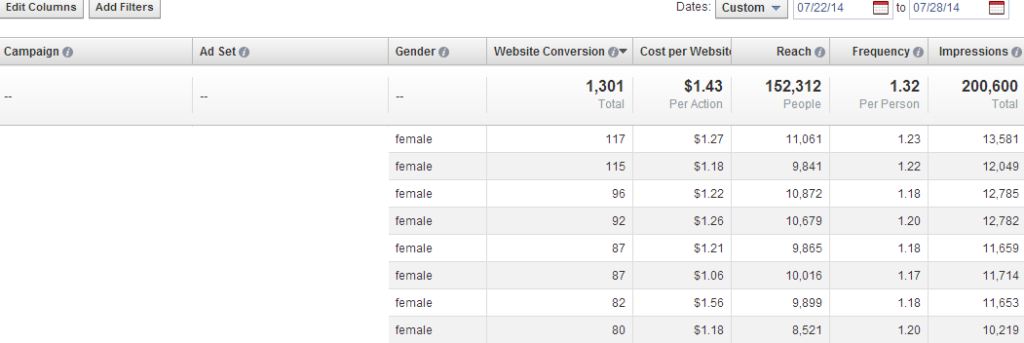
Responder demographic report.
Placement Based Metrics Report:
Select the placement report. This report will reveal where your ads have appeared for your highest performing audiences, i.e. whether they’ve appeared on our audiences newsfeed, right hand side, mobile or desktop. Facebook will often serve more to mobiles, but this may not necessarily be the best performing device, especially for ecommerce transactions.
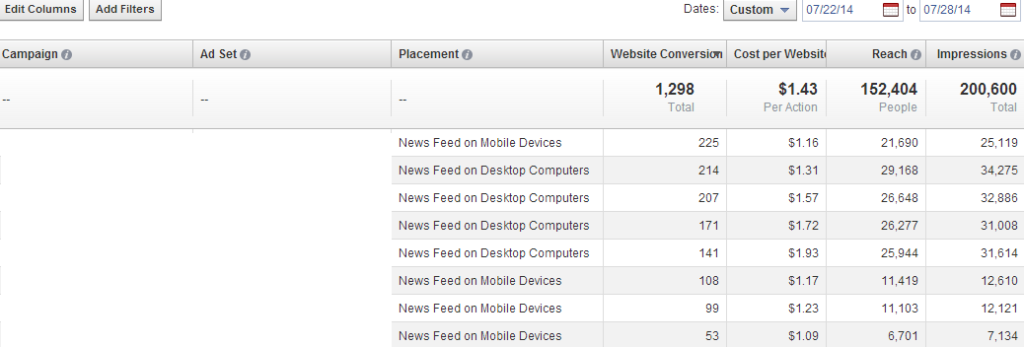
Placement report.
Once you become an expert at looking at these segments, you may start your campaigns in a far more granular way in the first place, to make it easier to optimise as the campaigns ramp up.
For more assistance on Facebook Ads optimisation, don’t hesitate to contact Nimbull here.
10 Creative Ways Snapchat Could Make Money
Snapchat has recently poached Facebook senior executives in a bid to determine the best way to make money. They have their work cut out for them. They have rejected a 4 bill offer from Facebook. They will invariantly want to go down the Twitter route, trialling different revenue models before discussing IPO. Their core strength is privacy, and they are inherently tied to that strength. Privacy and advertising dollars are usually anathema, making this an exciting puzzle to watch come together in 2014/15.
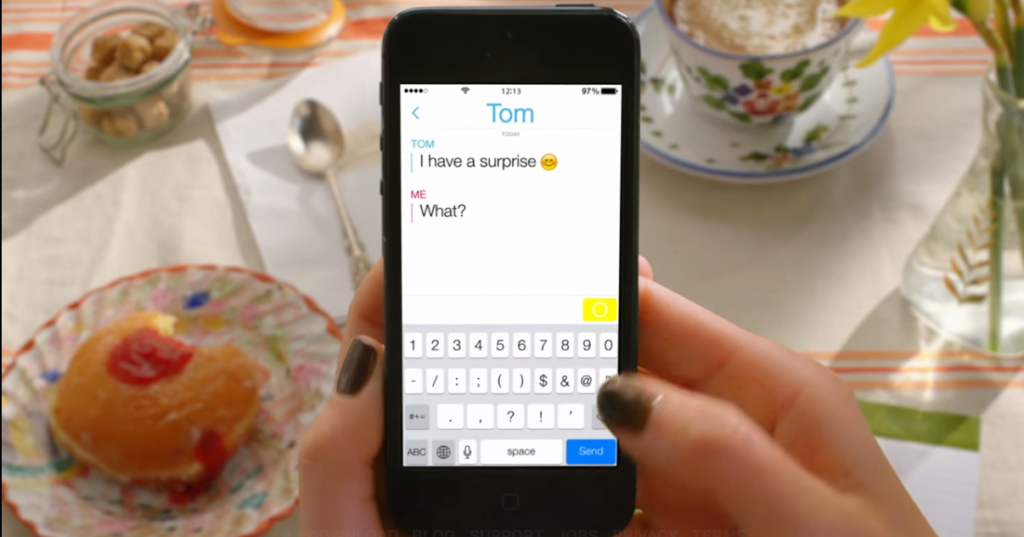
Here are some creative ways Snapchat could make money:
1. Snapchat Extortion – Pay them top coin or they’ll make all those kinky SEXTS public.
OK ready for the real list????
1. Display Sponsored Snapchat Stories from Advertisers in the Feed. These could be very contextual given Snapchat knows your location, name, phone number etc.
2. Make Sponsored Snapchat Stories Interactive – and link back through to the advertisers app or point of purchase e.g iTunes.
3. Snapchat Premium – Make special features like “screenshot” notification, or “image effect filters” part of a paid monthly package.
4. Snapchat Galleries – Create rich Brand destinations, similar to youtube branded channels, where a brand’s Snapchat stories would remain permanently. Allow for vanity urls like snapchat.com/cocacola. Other company info could also be presented.
5. Snapchat Competitions – Formalise an offering around competition entries. Brands could establish rules for a competition like “the funniest Snapchat sent this weekend WINS a trip to Bali”
6. Snapchat offers & Custom Tabs – Similar to Facebook Offers – allow advertisers to grant discounts and free trials based on interaction with a Snapchat Brand page or Story.
7. Snapchat Desktop & API – Similar to instagram, create a desktop version, where Snapchatters can at least see an archive of their previous stories on a vanity url e.g snapchat.com/nimbull. This would open up a whole new opportunity to monetize that website with Display Advertising.
8. Snapchat Gaming – allow a developer API for the creation of image based games on Snapchat e.g you have 10 seconds (the time it takes for the snap to expire), to reorder pieces of a puzzle and see the image.
9. Snapchat Local/Live Events – Send Snapchat alerts to users smartphones as they pass a location of interest e.g record store. This could also be used by government on important days like New Years Eve, or at sporting events by Charity groups to raise money.
10. Snapchat Sponsored Friends – The current “snapchat score” is said to simply be a count of how many Snapchats you have sent and received. Snapchat can make this a much more sophisticated algorithm, based on the way people interact with your Snaps and Stories. Snapchat automatically groups the people who are your “best friends”, which is a strong indicator of how influential an individual is on Snapchat. Similar to Twitter promoted trends, a Brand could move into a users “best friends” section by paying a premium.
Google AdWords – Ad Extensions Performance Data
Google’s latest update in AdWords is their reporting conventions for our Ad Extensions.
We are now able to view the performance data of each individual extensions – whether they were the drivers of clicks and/or conversions.
Simply go to your Ad Extensions tab, select the appropriate ad extension, Segment > This Extensions vs Other and voila!
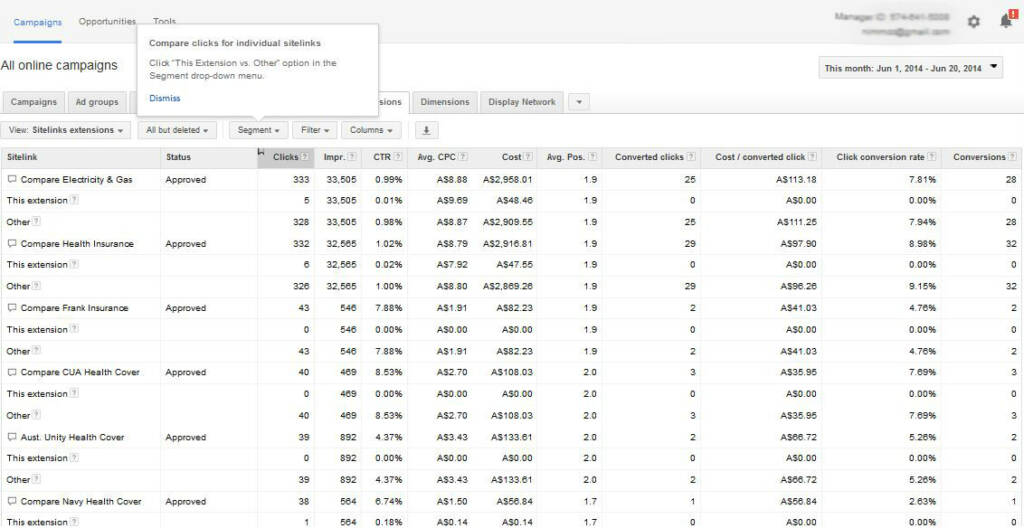
Google AdWords sitelinks extensions.
Prior to this, there was much ambiguity re. which extension had been the strongest performer.
We were limited to knowing quite simply, whether our sitelinks, call, or review extensions worked!
However, this is no longer the case. We now know which of our assets are working, providing us an opportunity to hone in on the performing ones and optimise.
Nimbull Partners with Indeed and Discusses Cost-Effective Solutions for Online Job Recruitment
THE STRONGEST PERFORMING CHANNEL
In a four-month period, HealthcareLink’s cost per application decreased from $25 to $12-$13 by using Indeed. “Indeed is the strongest performing channel on both conversion volume as well as effectiveness on CPA,” Verghios said. “The greatest strength of Indeed is that it’s just a really good product. The platform is very transparent and easy to use. You don’t have to spend that much time pulling on a lot of levers. With the help of the Client Services team, we are able to set it up to give us the results we needed.”
Click here for the full blog, or here for the case study.
How To Seed Your Content Online With Fast Results – Outbrain 101 Tutorial
According to the Content Marketing Institute, 93% of marketers are using content marketing in 2014. They also go on to confirm that only 33% of these same marketers feel they are effective.
Why are the other two thirds not getting traction?
Creating great content is pointless, if it doesn’t reach the desired audience.
Quite often the quickest and most effective way to distribute content is to use paid media.
This is especially the case if you are a less established business, without organic website traffic or massive facebook or twitter followings.
Using a paid content marketing distribution tool like Outbrain, is probably the quickest way to seed your content online with great results.
Outbrain Features and Tips:

Outbrain’s comprehensive reporting can show you the “publishers” and “sections” your content has been distributed on.

Your content will be seeded in the “From Around the Web” section of amazing websites, like smh.com.au. Outbrain has the smarts to serve your content on contextually relevant sites, as well as sites relevant to the user based on their cookies and browsing activity.
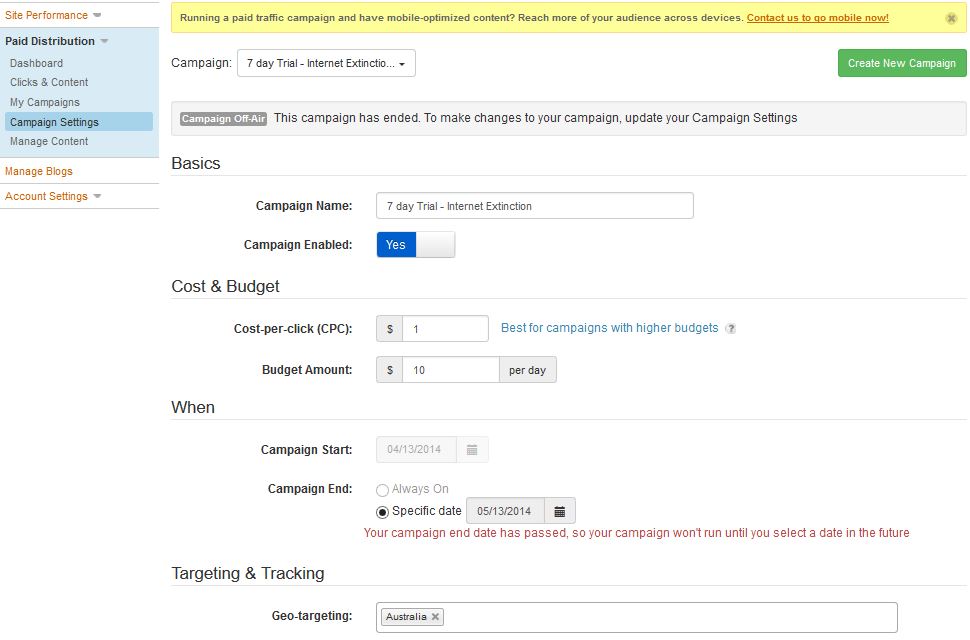
Set your daily budget, bid price, and destination urls in the campaign settings section.
Trial different types of content, with engaging titles.
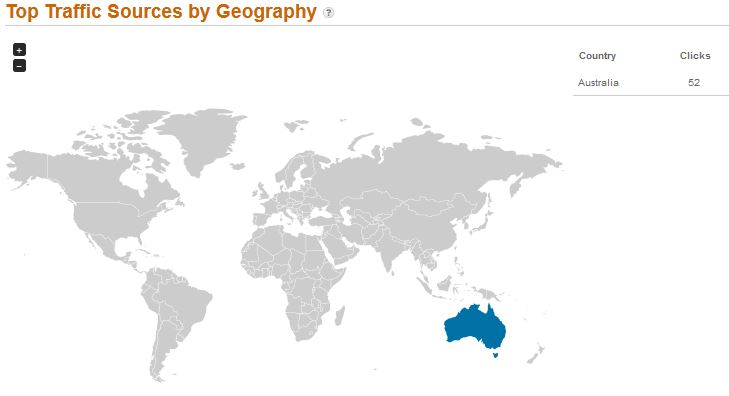
Ensure ‘geotargeting’ is set to a country, state, or city level. Geotargeting is used to control the geographic regions your content is targeted to. This can be as specific or as broad as you like – be careful with being too specific (City level) as it may be too narrow. You may need to write to an Outbrain account rep to achieve city specific geotargeting anyway, as it is sometimes a manual process on their end.
Remember, this traffic will show up under the “paid.outbrain” referrer in Google Analytics, so you will be able to see exactly how much ROI your paid content marketing campaign is driving for you.
Having a lead capture form or social share and follow buttons at the bottom of your content can be a great way to make the most of your paid content marketing traffic.
Happy Seeding!
Turkey banned Twitter. Then they threatened Facebook and YouTube could be next. Their president proudly proclaimed “we eradicated Twitter”.
Are we granted the internet? Or can we take it for granted?
The internet is a gift to humanity. Its made us infinitely more resourceful. Its the voice of the voiceless. Those who crave an alternate view now have a way to get it. Never in history have we had a mechanism to make the world such a smaller and bigger place at the same time. It’s touching everyone – much of the developing world has skipped desktop computers and graduated directly to smart phones.
But what can be said for citizens living in countries where the internet is heavily censored.
No one can dispute that different populations need varying styles of government. Many would argue that the absence or censorship of the internet is a necessary evil in many scenarios. These governments may look at things like cyber-bulling, Occupy Wall Street, London riots, Wiki Leaks and breathe a sigh of relief that they have some control over the internet.
Much of the Western world would argue that the internet should always be free and uncensored. This is because the internet just speeds up the inevitable. It was inevitable in Egypt that Hosni Mubarak’s government would be toppled, despite his attempts to pull Egypt from the internet gateway prior to his ousting. We saw much of the same elsewhere in the Arab spring, with Twitter and Facebook playing a key role. Turkey’s prime Minister Recep Tayyip Erdogan banned Twitter while he navigated through a corruption enquiry uncomfortably close to the next Turkish election. It was met by fierce opposition throughout Turkey, even from people as close to Erdogan as Turkey’s President.
All this happens in the backdrop of Barack Obama signing over control of domain names to a global consortium, that includes censorship heavy countries like China.

Michelle Obama and her daughters recently braved smog to scale the Great Wall of China. China’s “Great Firewall” is the real wall much of corporate America’s powerhouses like Microsoft, Google and Facebook are trying to scale. I think its a useful metaphor for the unknown challenges the West will face as the internet approaches its half century.
Over decades, dwindling natural resources can make even good governments do bad things. There’s no telling how governments could react when products like bitcoin may eventually threaten monetary systems and create side economies.
WILL THE INTERNET ALWAYS BE “PRIVATE”, FREE AND ACCESSIBLE 24/7?
Let us know in the comment section below.
Google Search April Fools Prank – Google Adbirds!
Google strikes again in 2014 with a hilarious April Fool’s prank.
When optimising our Adwords accounts this morning we were shown a strange notification:
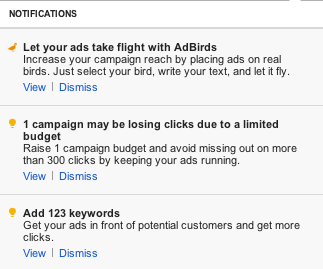
Investigating the Adbirds notification a little further, we quickly found you can choose your own bird and “let it fly” !

Nice clean fun in 2014. In 2007 Google announced Google TiSP (short for Toilet Internet Service Provider). It was a fictitious free broadband service supposedly released by Google.
What was your favorite Google April Fools Day prank?
Tell us in the comments below.
What Brandscreen Gains From the Zenovia Deal

AND

Zenovia has acquired Brandscreen, and with it keeps the DSP/DMP space a step further away from a consolidating oligopoly.
Brandscreen can remain a DSP leader in APAC, where it has more experience than TURN, MediaMath etc
SO WHY IS THIS GOOD NEWS FOR BRANDSCREEN, AND AGENCIES WHO POWER THEIR TRADING DESKS USING IT?
STABILITY AND RESOURCES
The amount of resource needed to operate a DSP at scale globally is huge. Think of billions of impressions all needing a real time decision. The processing power is immense. With both companies involved, there is more capital to ensure longevity.
VIEWABLE IMPRESSIONS
Brandscreen will now be able to see if an ad was actually seen (vs just served). This cool feature from Zenovia helps us get closer to the true value an impression can bring
GLOBAL REACH AND SCALE
Using Zenovia, Brandscreen will be able to have reach beyond APAC. It will likely start with the US and scale from there.
FRAUD FILTERED
One of Zenovia’s core strengths is its ability to remove fraudulent clicks and duplication. Their website describes them as “The preferred technology platform for advertisers to access viewable, clean media from the world’s best publishers”. This will be a great gain for Brandscreen once it makes it into the feature-set.
R&D
The DSP space is similar to an arms race of gaining features and functionality to attract the hottest advertisers and agencies. Video, data aggregation, mobile and segmentation are all differentiating features across programmatic buying products, and are tweaked and released daily.
Let’s face it, Google Adwords is probably 50% of your digital marketing budget. And its the 50% that’s actually working really well. So when you hear that Google is changing how it counts conversions, you naturally need to sit up and listen closely.
You can find the full blow by blow here: https://support.google.com/adwords/answer/3438531
The main benefit of Google’s new “Flexible Conversion Counting” will be that advertisers can now decide for each conversion type, whether they allow duplicate counting of conversions per click/user. For some clients it won’t make a large difference, as their “one per click” vs “many per click” counting is always close.
This will have a very different impact on savvy Adwords Advertisers vs novice Adwords users.
Novice Advertisers:
Google makes most of its money from small business users of Adwords. They have found a really nice way to make you think your campaigns are improving in February, without you noticing! Most of you are looking at the “conversions one per click” column to count your conversions. All of a sudden, this column will be renamed to “converted clicks” which is a little ambiguous. You will now be naturally drawn to the column simply named “conversions”. This will be the old “many per click” column, you were probably ignoring. The problem is it will now be double counting events like signups or email address submissions, which you previously were rightfully ignoring.
Savvy Advertisers:
A savvy advertiser may take advantage of this new change. They may have ecommerce conversion events that they want to count several conversions per click, but also softer events like “newsletter signups” that they only want to count once per click. Now they have a way to toggle this at the conversion level, and simply only refer to the new column called “conversions” (the old “conversions many per click”) on the front end of the Adwords interface. This will speed up reporting and reduce the amount of columns needed to tell the true story of performance.
Adwords users are advised to configure the conversion settings properly so they have a proper “apples to apples” comparison between Jan and Feb, and continue to understand the true value of Adwords to their business.
HELLO MOTO, GOODBYE GOOGLE – Can the largest PC maker become the largest smartphone maker?
Lenovo snapped up Motorola for a bargain today. They bought Motorola from Google for 2 bill, only a few years after Google bought it for 12 bill. Google essentially bought Motorola at a time when they needed a few things to fuel the growth of their Android mobile operating system. They needed patents to clear the way for feature rollouts that wouldn’t end up in court upon release.

The first digital hand-size mobile telephone – Motorola International 3200
They also needed the perspective of a handset maker, so that Android could really become so full of utility that it would catapult to power 78% of smart phones globally. With the “real job” done and very little headway made in actually making hot selling handsets (the Moto X and Moto G failed to hit great heights), Google says they are happy to take a neutral position. Don’t believe anything about Google saying their goal all along was only about operating systems. If the Moto X and Moto G sold like iPhones they would definitely be pushing harder in that area. Google has spent the last 10 years moving out of their comfort zone of Search Engines, and creating other profitable offerings like Video and Display networks. They even recently bought NEST for their upcoming foray into home automation. Lenovo gains instant market share and brand recognition with this acquisition. They will jump from 5th to 3rd in the smart phone market, and most importantly get a brand name that is synonymous with Mobile invention, longevity, pioneership. This brand awareness pervades most most parts of the world, especially for anyone Gen X and older.
Google has acquired Nest, and makes a larger play in the home automation space.

With home automation and the “Internet of things (IOT)” all the buzz at this year’s CES conference in Las Vegas, Google is obviously positioning themselves for the revenue opportunities set to come from home automation.
Also, outside of “don’t be evil”, Google’s overall ART OF WAR business strategy is to protect its overall core products like search engine marketing by distracting competitors and getting involved in their space. We’ve seen this countless times over the last eight years with Google’s foray into video, display, mobile operating systems, office suites, to name a few.
Moving via acquisition in this space is a great way for cashed up Google. They moved in a similar fashion when acquiring WIMM watches last year to jump into the wearables space. A measly 3 billion for Nest will allow them to take Nest’s products and eventually compete with industry leaders such as ADT and their “pulse” product. ADTs Pulse will allow you to control many aspects of your home including unlocking doors and thermostats, all from a remote location.
Google brings data aggregation, a full view of the consumer, and rapid R&D to the space. This could also raise a future privacy concern. Google, who already knows all your movements based on Maps, all your interests based on YouTube and Google Plus, and all your conversations base on Android and Gmail, will now complete the loop with the missing piece – “the physical world”. By having fully integrated cloud connected versions of Nests thermostats, smoke alarms etc in your home, as well as the “wearables” like Google Glasses and WIMM Watches attached to you when you move – they will know your movements, feelings, actions, intentions, interests and motivations – all in real time. This is a massive opportunity for marketing dollars, especially when you consider the shift towards real time programatic buying seen in the last 2 years.
Introduction of Facebook Trending Topics

You may have noticed over the last day or so that Facebook is now displaying the most trending topics within its network. The concept of trending topics is very much intrinsically a Twitter one, and is closely tied to the proliferation of the hash-tag.
By copying such a fundamental part of twitter, they are diluting the uniqueness of Facebook’s offering. Facebook’s entire premise is around organising the web around people and their connections, not external topics.
So why is Facebook going down this road? Of course the answer is the same answer that governs 95% of all digital marketing platform decision making – money! Twitter has done a great job monetising their “promoted trends” product and has been doing it for many years.
The question now is, how will Facebook monetise their trends, and allow advertisers to gain access to core inventory on peoples timelines. Will it be a simple algorithm which calculates the speed/volume of conversation on a topic, or will they weave in demographic elements based on the users profile so sponsored trends are more relevant. If they can, they may find themselves ahead of twitters promoted trends product, especially since they can win on scale of inventory alone. Half of Twitters conversation and audience is entertainment or celebrity related. Facebook has a far larger user base that touches on every vertical and demographic across most of the globe.
Labor’s Electoral Crash and Burn – Lessons for the Workplace
What did the Australian election result teach us about Agency life?
Disunity is the ultimate killer.
Despite all the amazing policies produced by Julia Gillard and Kevin
Rudd, ultimately the Australian public could not forgive the
backstabbing and disloyalty the party displayed over the course of
three years.
The lesson here is that no matter how strong the quality of work,
disunity in an account team is unforgivable. Even when presenting
amazing business changing, turn key results to a client, if an
agency’s account manager and campaign manager are not in lockstep, it
can throw off the entire benefit of the meeting and devalue the work.
Chemistry and communication are critical in a business relationship.
Be conscious of the vibes you are giving off and realise that some
clients are incredibly perceptive. Your body language can give a lot
more away than you anticipate. Why would a client be happy to work
with you if you are not happy to work with your own team members?
AdTech Melbourne – Just The Good Bits

Wednesday 17th July, 2013
Tricia Nichols, Global Lead Consumer Engagement, Media Innovation & Brand Partnership, GAP Inc (US) Building Meaningful Partnerships – How To Create Bonds With Consumers
· Marrying physical and digital. 7 11 and Zenga swapped customers
· @dvf did kids collection for gap
· Change partner relationships from transactional to innovative
Panel: Does Australia Have Anything To Fear From Programmatic Advertising?
· It’s meant to help sales teams.
· Lots of good tech being brought over from USA e.g Turn
· Analytics staff growing on all sides. Digitas US has 50% staff in analytics.
Case Study: The Next Big Thing Is Here: Tablets
· 75% use is for gaming
· Higher use at home
· Older Audience
· Spending
· More engaged
· Over WIFI
· Best to connect to tablet users using long form video, with option to buy, after 7 pm.
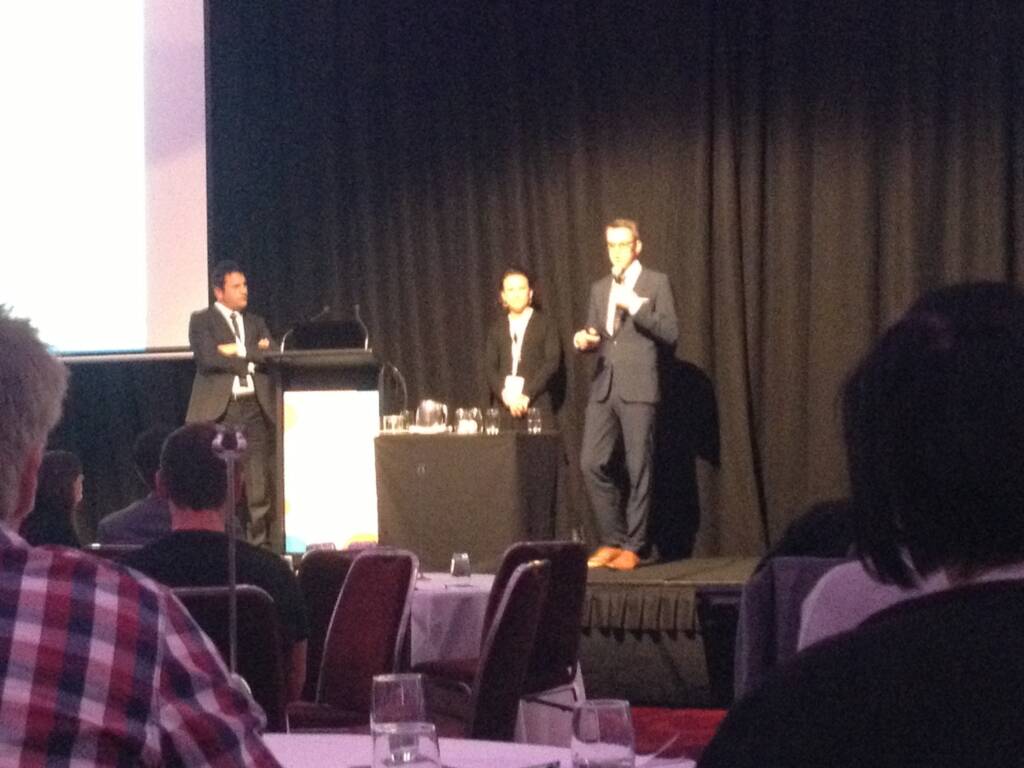
Tourism Australia Tablet app case study
· Make full potential of tablet use
· Use paid media to promote use of app, especially search
· 200k to 300k spent on their tablet app
Panel: Social Media Activists are Coming for Your Brand – Are You Ready?
· A crisis is when negative sentiment reaches a level that costs you money.
· Qantas puts out a templated tweet within 5 mins of a crisis.
· When choosing a listening tool, don’t pick the one that helps digital marketers, choose the one that helps the whole organisation.
· Most re-tweeted tweet is Obama after election win
· Vodafone uses twitter for “care” and “brand”, via two twitter handles.
Case Study: Social Media ROI Measures and Competitive Analysis
· KRAFT social reporting approach – always ask:
– What?
– So what?
– What’s next?
· Kraft believes its critical to measure CPI ie cost per impact, not just ROI when it comes to social
· Kraft attributes more to a share vs a like and so on, for CPI
· Billboards don’t have to justify themselves at all. Why is social so scrutinised?
Case Study by Bisolvin: Mobile As the First Screen in Integrated Advertising Campaigns
· Great mobile web e card SMS/social site created, helped Bisolvin have one of their best years in their 50 year existence.
· Promotion asked: text “mucus“ to this number, written on bus stations. Great use of the medium.
· Key was very simple brief from client that didn’t start with “we want to do something in mobile”.
· By doing only mobile web on HTML 5, more cost effective than 3 mobile apps
Thursday 18th July, 2013
Keynote: Andy Lark, CMO & Online Officer, Commonwealth Bank of Australia The Successes and Learning’s of Australia’s Most Digitally Savvy Bank
· This generation going through biggest transformation ever due to social web.
· Facebook – marketing in a social world.
· 89% of Facebook users are multi screening
Panel: Developing a Killer Content Strategy – Tips for Success

Michael Verghios speakig alongside Ardent Digital and DT. Best panel of the day of course :)
Marketing Your Technical Product/Service… to My Mother
· Lead with benefits, not features
· Simplifies his web experience so his elderly mother could understand it
Location, Location, Location: How Location is Now Cooler than “social media” in the world of Content and Brand Communications
· Brazilian clothes store showed the “likes” for each garment on a digital panel located on the clothes hanger.
· Location shouldn’t matter much in business.
· Aussies are often more productive and harder working than many other countries, so we should be servicing a lot more global business
Case Study: Agile Marketing
· Try avoid “set and forget” advertising.
· Carlton has fun taking the piss as a brand.
· Created an app with many games that engages people for longer.
· Visual slide used to describe the app teething issues Carlton experienced.
· Look for gap in the market and exploit it. Even if you have to invent it.
The Next Level – How Businesses Are Using Games to Engage Their Audience
· 61% of C level execs game daily as a break.
· Average age of a gamer is 35
—
Michael Verghios
Digital Marketing Director
info@nimbull.com
Facebook www.facebook.com/nimbull
LinkedIn linkedin.com/in/michaelverghios
Twitter @michaelverghios
5 Things the Kevin/Julia Brawl Taught Us About The Workplace

There’s probably no workplace more intense than Parliament.
3 years of political argy bargy are a goldmine for those who want to learn from Julia and Kev’s mistakes.
1) Manage internally and externally.
Kevin made the mistake of having the support of his constituents, yet failed to rally and keep the respect of his own troops in the labour party. That is why he was overthrown as PM.

Julia, did the inverse. She gained strong support from her party, enough to topple Kevin in 2010. She also was able to starve off 2 attempted coups, winning the first by 40 some votes in the caucus. She ultimately fell because her sentiment with the public had fallen so far that her own loyal troops were forced to abandon her.
Lesson in the workplace: Be a good, honest and AWARE leader to clients, staff and partners. Manage up and down. Stay humble. That intern will one day be your boss, or highest grossing client.
2) What is the unstated agenda?
There is a sick part of every Aussie that will go for an underdog no matter what. Not everyone will admit it, but I’m sure people were thinking “We voted Kevin, we want what we paid for. You booted him out Julia, now the same should happen to you”. There was an unstated agenda by the Australian public to:
a) Restore what we installed during KEVIN 07.
b) Have an alternative to Abbott. You can’t expect a 30 year labour voter to just pivot around because of Julia.
Lesson in the workplace: Sometimes things will occur in the workplace that defy obvious logic. A person gets promoted beyond their talents and is protected. A departement is preserved despite being cashflow negative or a heavy operational overhead. Look beyond the black and white and try and understand the unstated agenda of the decision makers in an organization. This could save you pulling your hair out when strange things occur, or may help you plot your positioning strategy and allegiances.
3) Play the right card, at the right time.
We saw Julia play the misogyny card several times throughout her term. It was the sharpest tool she had to help polarize herself from Abbott. Her first speech even went viral on youtube.
The issue with this approach was, that although it at first seemed liked there may be some credible evidence to support her claim, she played it over and over, and it eventually got discounted by the public as political name calling. She should have left it alone after she quoted Abbotts stance on not enough women in office ie “the assumption that this is a bad thing”.
Australian Prime Minister Julia Gillard has hit back at Opposition Leader Tony Abbott’s call for Peter Slipper to be removed as Speaker, attacking Mr Abbott as a misogynist.
Lesson in the workplace: Its no secret that the most successful people in the corporate world are almost always effective communicators. Sometimes there will just be times where its far more effective to not say anything at all. There’s a bit of Don Draper in all of us!
4) Be careful showing doubt/weakness.
One of Julia’s core strengths was her ability to be unwavering in the face of adversity and fierce scrutiny.
No matter what the onslaught, she was able to point to the policy decisions she was proud of e.g NBN, disability scheme, price on carbon, gonsky etc. Right up until the end, that is why she was able to keep her closest allies like Wayne Swan.
Despite all the fracas, she will ultimately be remembered as a lady who fought for a fairer Australia, and paved the way for our forethcoming female PMs, who will not be chastised for knitting on the cover of Women Day.
Lesson in the workplace: You’ve probably heard the analogy of the swan gliding on a lake. It appears effortless, yet its legs are paddling furiously underneath the water. Quite often as leaders, we are actually best serving when we appear as a solid helm, and constrain our doubts and insecurities for a tight knit meeting with fellow management, away from the rest of the organisation.
5) Its a job, not a Death Sentence. Know when your time is up. Go out in class.
Julia knew a petition was circulating. She made the pre emptive move of calling a ballot. This was a sign of power, that the ball was still in her court. She knew how badly she was polling, and that this challenge was inevitable. In reality, had it been forced through a petition, the votes could have been a lot further apart. Either way it was a mitigating move on her part. If she had run, she may have, as Kevin put it, moved labour to the biggest landslide defeat since federation.
Lesson in the workplace: Undertand when a role or organisation is not right for you. Set yourself boundaries you will not go beyond. Realise what else is out there for you, and that the grass can sometimes be greener. You may have to accept at times that an organization is just not in the right time or place to truly value your contribution, and you may be far more successful applying your core talents to another organisation or cause.

